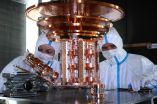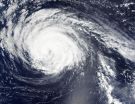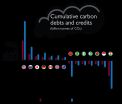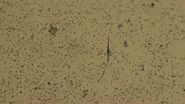Pitt researchers developing a novel way to identify pathogens
Carbohydrate-protein interaction tells the tale
2015-09-08
(Press-News.org) PITTSBURGH--There are plenty of ways in the lab to determine which bug is bugging you when you're sick. The University of Pittsburgh's Xinyu Liu, Sanford Asher, and colleagues may have found a faster method.
"You can do a swab and culture the bacterium or fungi, but that takes days," Liu says. "You can examine the DNA, but that takes another day or two. It's a pretty tedious process. So, before the identity of the pathogen can be determined, doctors give infected people a broad-spectrum antibiotic that kills everything."
It would be better for the patient, then, to correctly identify the pathogen in question as soon as possible and treat it with a specific antibiotic aimed directly at the offending bug.
Liu, assistant professor of chemistry within Pitt's Kenneth P. Dietrich School of Arts and Sciences, along with Asher, Distinguished Professor of Chemistry, and others, have developed a method of identifying pathogens that relies on spectroscopy, determining an object's identity through the type of light it emits. Their work was published in the journal Angewandte Chemie International Edition.
The Liu-Asher team developed a specifically engineered protein hydrogel that interacts with carbohydrates on the surface of a fungus named Candida albicans, which is responsible for oral thrush and skin yeast infection and can be life-threatening for immunocompromised patients.
When the protein hydrogel interacts with the carbohydrates on the surface of C. ablicans, it shrinks the 2-D photonic crystals where the hydrogel resides on, emitting a specific light signature that can be recognized by the naked eye or a spectroscope. This happens almost immediately, much faster than the days other methods require.
"The broader implications are kind of big," they say. "You can imagine that if we try to extend this work, we can use differing antibodies to make hydrogels tailored for specific pathogens such as staph, E. coli, etc. And people living in rural areas or underdeveloped countries might be able to use this method to see if their food or water is contaminated or their kids are infected with deadly pathogens."
INFORMATION:
ELSE PRESS RELEASES FROM THIS DATE:
2015-09-08
Researchers have proven that rudeness -- like poison in the water cooler -- is toxic in the workplace, affecting both job and business performance. But what if your office is a hospital Intensive Care Unit where lives hang in the balance?
A new Tel Aviv University study published in Pediatrics suggests that even the most benign forms of impoliteness may impede medical personnel's ability to perform under pressure and damage the quality of patient care. Rudeness alone accounts for a significant drop in hospital staff's diagnostic and professional performance, according ...
2015-09-08
CAMBRIDGE, Mass.--The boiling of water is at the heart of many industrial processes, from the operation of electric power plants to chemical processing and desalination. But the details of what happens on a hot surface as water boils have been poorly understood, so unexpected hotspots can sometimes melt expensive equipment and disable plants.
Now researchers at MIT have developed an understanding of what causes this extreme heating -- which occurs when a value known as the critical heat flux (CHF) is exceeded -- and how to prevent it. The new insights could make it possible ...
2015-09-08
This news release is available in German.
The Earth, planets, stars, and galaxies form only the visible portion of the matter in the universe. Greater by far is the share accounted for by invisible "dark matter". Scientists have searched for the particles of dark matter in numerous experiments - so far, in vain.
With the CRESST experiment, now the search radius can be considerably expanded: The CRESST detectors are being overhauled and are then able to detect particles whose mass lies below the current measurement range. As a consequence, the chance of tracking ...
2015-09-08
Washington, DC (September 8, 2015) - The modern-day complaints department tends to be a direct mention on Twitter to the company that has wronged you. It's easier than ever to have a direct line to a company, but what does a corporation get out of this interaction? A recent study published in the Journal of Computer-Mediated Communication by researchers at VU University Amsterdam, The Netherlands, found that people who follow corporate social media accounts that present a human voice are more likely to have a positive view of the company.
Corné Dijkmans (NHTV Breda ...
2015-09-08
Sticky resin from conifers contains substances that could relieve or cure epilepsy. Researchers at Linköping University have synthesized and tested 71 substances known as resin acids, of which twelve are prime candidates for new medicines.
"Our goal is to develop some of the most potent substances into medicines," says Fredrik Elinder, professor of molecular neurobiology and head of the study, which was newly published in Nature's open-access periodical Scientific Reports.
Professor Elinder is an expert on the function of ion channels - the pores in the cell membrane ...
2015-09-08
Individual transistors made from carbon nanotubes are faster and more energy efficient than those made from other materials. Going from a single transistor to an integrated circuit full of transistors, however, is a giant leap.
"A single microprocessor has a billion transistors in it," said Northwestern Engineering's Mark Hersam. "All billion of them work. And not only do they work, but they work reliably for years or even decades."
When trying to make the leap from an individual, nanotube-based transistor to wafer-scale integrated circuits, many research teams, including ...
2015-09-08
Typhoon Kilo continues to thrive in the Northwestern Pacific and imagery from NASA's Terra satellite late on September 7 showed that the storm still maintained a clear eye.
The MODIS or Moderate Resolution Imaging Spectroradiometer instrument that flies aboard Terra provided a visible-light image of Kilo on September 7 at 23:50 UTC (7:50 p.m. EDT). The image showed thick bands of thunderstorms wrapping around the eastern and northern quadrants of the visible eye.
At 0900 UTC (5 a.m. EDT) on September 9, Typhoon Kilo had maximum sustained winds near 65 knots (74.8 mph/120.4 ...
2015-09-08
This news release is available in French.
Montreal, September 8, 2015 -- All countries have contributed to recent climate change, but some much more so than others. Those that have contributed more than their fair share have accumulated a climate debt, owed to countries that have contributed less to historical warming.
This is the implication of a new study published in Nature Climate Change, in which Concordia University researcher Damon Matthews shows how national carbon and climate debts could be used to decide who should pay for the global costs of climate ...
2015-09-08
Scientists at Texas A&M University have made additional progress in understanding the process behind scar-tissue formation and wound healing -- specifically, a breakthrough in fibroblast-to-fibrocyte signaling involving two key proteins that work together to promote fibrocyte differentiation to lethal excess -- that could lead to new advances in treating and preventing fibrotic disease.
A new study led by biologists Richard Gomer and Darrell Pilling and involving Texas A&M graduate students Nehemiah Cox and Rice University technician Varsha Vakil points to a naturally ...
2015-09-08
Contrary to popular belief, the worst injuries baseball catchers face on the field come from errant bats and foul balls, not home-plate collisions with base runners, according to findings of a study led by researchers at the Johns Hopkins University School of Medicine.
The research, done in collaboration with Baltimore Orioles trainers Brian Ebel and Richard Bancells, involved analysis of all catcher injuries during major league baseball games over a 10-year period.
A summary of the findings, published ahead of print Aug. 28 in the American Journal of Sports Medicine, ...
LAST 30 PRESS RELEASES:
[Press-News.org] Pitt researchers developing a novel way to identify pathogens
Carbohydrate-protein interaction tells the tale



